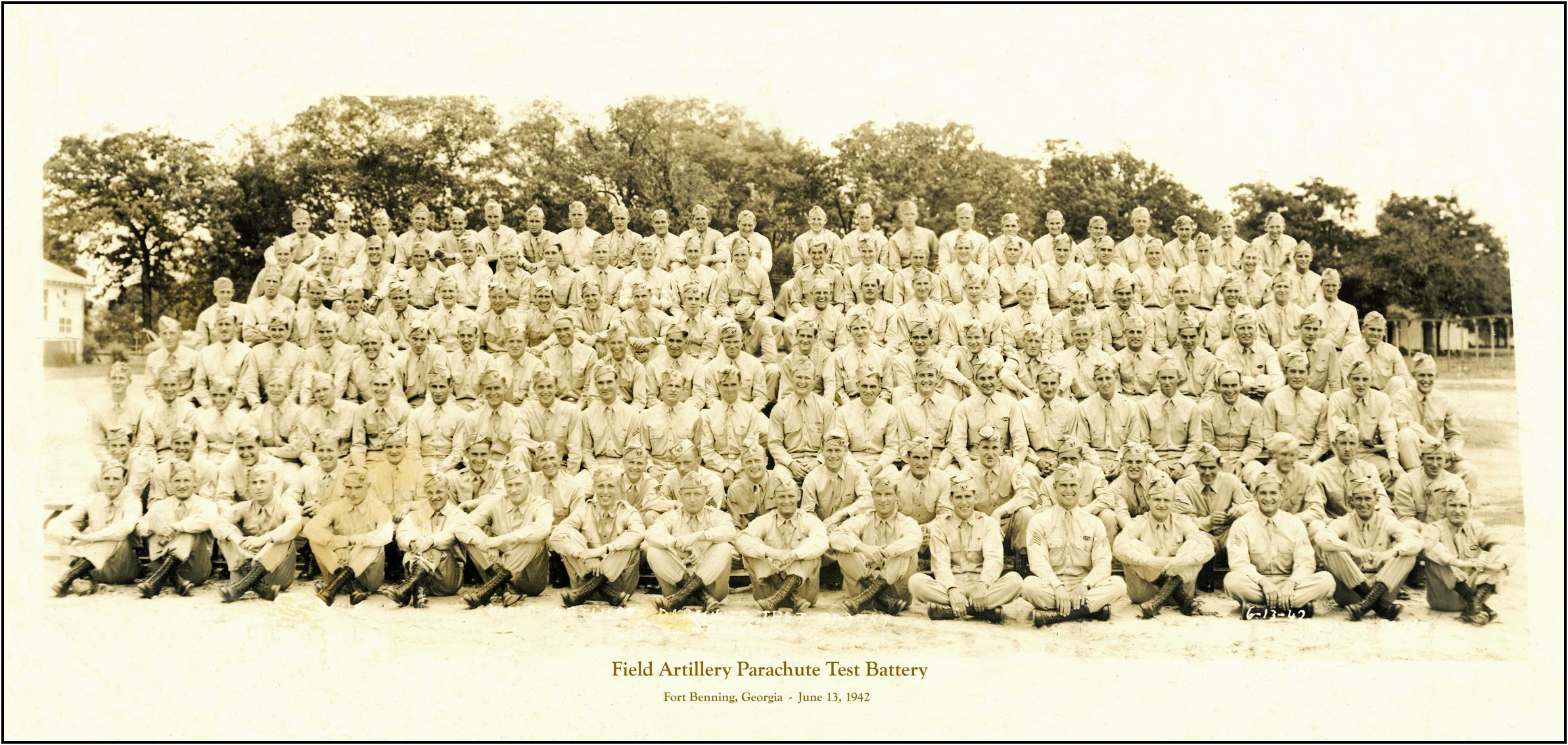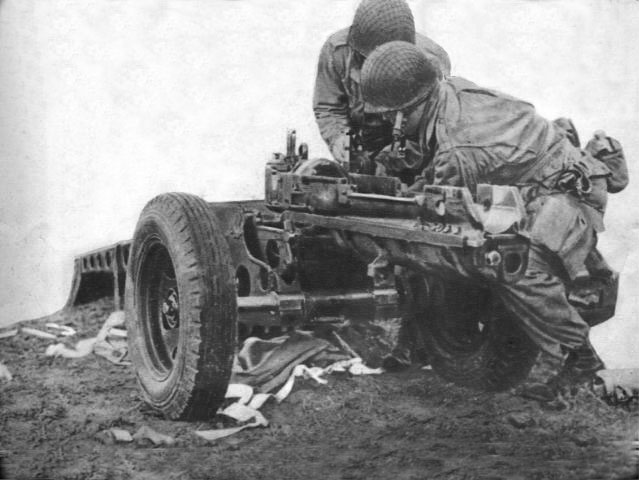
|
|
|
|
|
|
CONTACT US |
|

 |
|
||||||||||||
 |
|||||||||||||

|
The War Department authorized the creation of the first test parachute artillery battery in February 1942. After the officer and enlisted men chosen qualified as paratroopers, the Parachute Test Battery (see photo below) under the command of Lieutenant Joseph Harris began developing a system to airdrop artillery guns and artillery men behind enemy lines to provide close support fire for infantry units. During the summer of 1942 they perfected this system which involved disassembling into 9 bundles a 75-millimeter Pack howitzer and air dropping the weapon out of the door or from the bottom of a C-47. With persistent training the 75-mm Pack howitzer could be reassemble in 30 minutes.
When the 9 pieces of the 75-millimeter pack howitzer were assembled it weighed thirteen hundred pounds. It fired a thirteen pound projectile a maximum range of 9,475 yards.
On the 24th of September, 1942, the first Parachute Field Artillery Battalion, the 456th PFAB, under the command of Colonel Harrison B. Harden Jr. was activated from the Cadre and assets of the original Parachute Test Battery. The 456th PFAB was permanently attached to the 82nd Airborne Division on 1 October at Fort Bragg, North Carolina. The battalion was initially comprised of three batteries, each with 4 x M1A1 75mm pack howitzers. It also had an anti-tank platoon of four x M3A1 37mm anti-tank guns. Throughout World War II the 456th would continue to provide Cadres for other Parachute Field Artillery Battalions.
The battalion's first combat jump was in Sicily on the evening of July 9, 1943, in support of the 82nd Airborne Division's 505th Parachute Infantry Regiment. The battalion's primary mission was to fire at enemy troops and tanks utilizing a high arc, or indirect fire. During the intense Battle of Biazza Ridge, however, the battery had scored its first victory against enemy tanks using direct fire.
Following the Sicilian campaign, the battalion was split up. Batteries C and D remained with the 82nd Airborne Division and transferred to England to prepare for the invasion of France transferring the 456th PFAB designation to the European Theatre. Headquarters Battery and Batteries A and B supported the 1st Special Service Force and participated in the Italian campaign battles for Monte Casino, Anzio and Rome.
In Normandy two Howitzers of the 456th were parachuted in, while the remaining Guns came in latter by sea. Providing Air Liaison and Artillery Spotting were two L4 Piper Cub Light aircraft of the Air Support Party.
In early 1944 many of the men from the 456th Parachute Field Artillery Battalion filled the ranks of the newly formed 463rd Parachute Field Artillery Battalion.
(Bob Schweikert, webmaster and Lee M. Bowden; First Allied Airborne Association.)
Photograph of the original Field Artillery Parachute Test Battery, June 13, 1942.
Double click here for a larger image with names.
 Our thanks to the family of Staff Sergeant George "Stewart" Sipple for the photograph.
Our thanks to the family of Staff Sergeant George "Stewart" Sipple for the photograph.
The 75mm Pack Howitzer could be taken apart to be loaded on the C-47. Six parapacks were loaded under the C-47, a Door load for the Wheels, and a padded box held the Gun sight and the Breech Block.

The Equipment Chute was loaded into the Pod in front of the aircraft.

If you found all the pieces of the Gun you would assemble them.
In this Picture the Recoil system is installed, the Breech Block is in and the rear Trail is attached. The Tube or Barrel has to
be added and Top Sleigh would be on top.

If no jeep or other tow method was available after assembling the gun, it had to be moved by hand. (In Sicily for example,
no jeeps were dropped.)


|